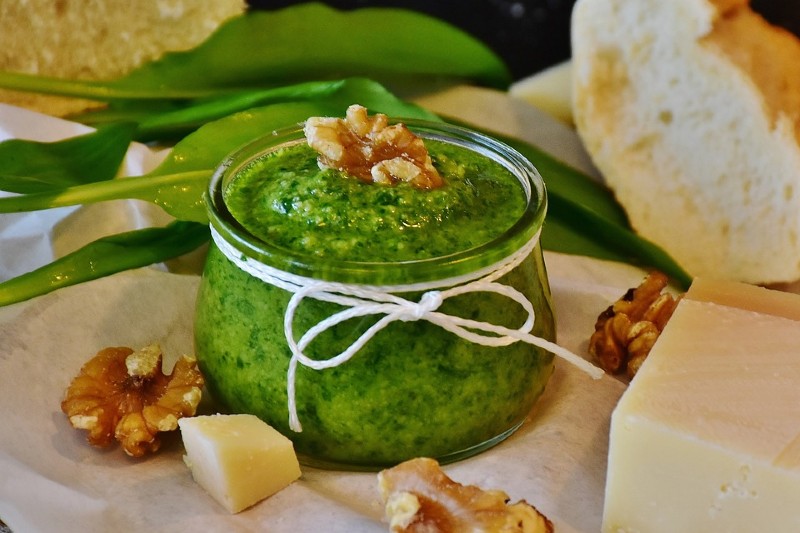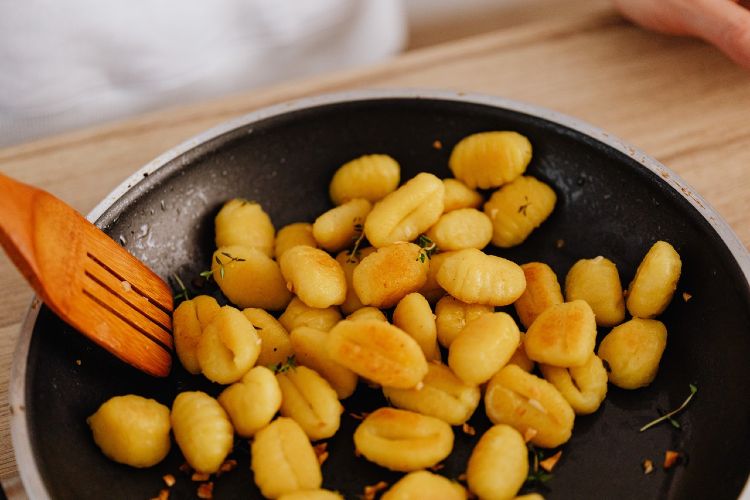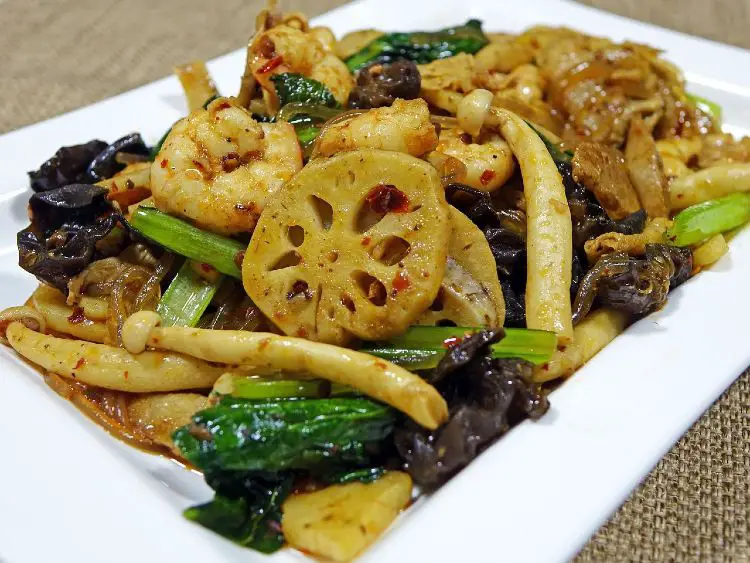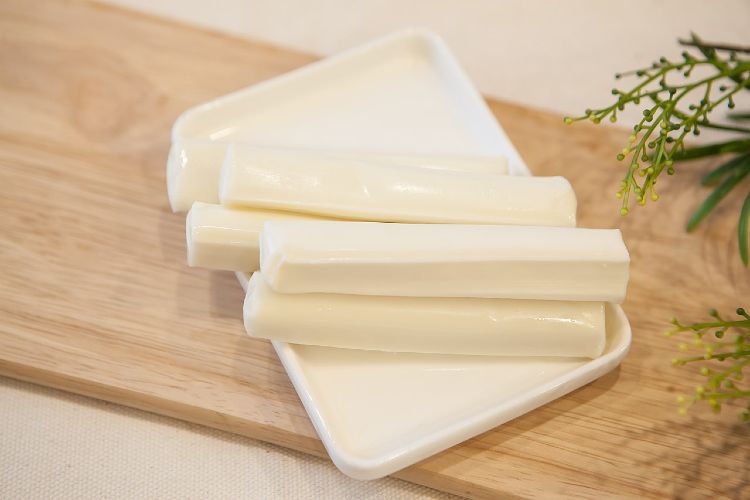What Does Pesto Taste Like?
Quick Answer
Pesto has a bright, herbaceous flavor primarily from fresh basil, accented by garlic’s zesty kick and pine nuts’ nuttiness. Parmesan cheese adds a salty, umami depth, while olive oil gives the sauce a smooth, rich texture. The resulting taste is a complex blend that is both fresh and savory, making it a versatile addition to many dishes.
What is Pesto?
Pesto is an Italian sauce traditionally made by blending fresh basil leaves, garlic, pine nuts, Parmesan cheese, and extra virgin olive oil.
It originates from the Liguria region of Italy and is often used as a pasta sauce, although it can also be used in a variety of other dishes like sandwiches, salads, and as a topping for meats and vegetables.
The sauce has a vibrant, herbaceous flavor profile with nutty, garlicky, and cheesy undertones.
What Does Pesto Taste Like?
At the heart of pesto’s flavor profile is its herbaceous quality, thanks largely to the fresh basil leaves that serve as its main ingredient.
The basil brings a bright, leafy flavor that is both refreshing and aromatic.
Following closely behind is a nutty undertone provided by pine nuts, which adds depth and a touch of complexity.
Garlic imparts a pungent, slightly spicy kick that elevates the sauce’s overall zest.
The Parmesan cheese delivers a salty, umami richness, while the olive oil acts as the unifying element, rounding out the flavors with its silky, rich texture.
Complexity
The magic of pesto lies in its complexity; each ingredient plays a vital role in creating a balanced, multi-layered flavor profile.
The basil provides the initial burst of herbal freshness, the garlic and pine nuts offer zesty and nutty counterpoints, and the Parmesan lends a salty, cheesy finish.
Finally, the olive oil envelops these flavors, adding a luxurious richness that ties it all together. The result is a sauce that feels harmonious yet intricate, with each component enhancing and being enhanced by the others.
What is The Texture of Pesto Like?
The texture of pesto can vary depending on how it’s prepared.
Traditional methods using a mortar and pestle yield a chunkier consistency, where individual ingredients can be more easily distinguished.
This chunkiness adds a rustic feel and a more complex mouthfeel to dishes. On the other hand, using a food processor can result in a smoother, more homogeneous texture, which might be better suited for uses where a more uniform consistency is desired, such as in salad dressings or as a drizzle.
What are The Different Types of Pesto?
Pesto may have its roots in Italy, but various versions have emerged, adapting to local ingredients and palates. Here are some common types:
- Genovese Pesto: The classic Italian version, featuring basil, pine nuts, garlic, Parmesan cheese, and olive oil.
- Red Pesto (Pesto Rosso): Made with sun-dried tomatoes, almonds, garlic, and sometimes a bit of chili pepper for heat.
- Pistachio Pesto: Swaps out pine nuts for pistachios for a different nutty flavor.
- Arugula Pesto: Uses peppery arugula instead of basil for a more intense, spicy kick.
- Vegan Pesto: Omits the cheese and sometimes uses nutritional yeast to mimic the umami flavor of Parmesan.
- Cilantro Pesto: Replaces basil with cilantro for a fresher, somewhat citrusy taste.
- Walnut Pesto: Utilizes walnuts instead of pine nuts for a slightly bitter, earthy nuance.
FAQs
Is Pesto Spicy?
Traditional pesto is not spicy. The garlic adds a bit of zest but doesn’t contribute significant heat. However, some variations of pesto may include spicy ingredients like red pepper flakes.
Does All Pesto Taste The Same?
No, the taste of pesto can vary depending on the quality and type of ingredients used. For example, using a different kind of nut, like walnuts instead of pine nuts, will alter the taste. Likewise, using pecorino cheese instead of Parmesan will create a different flavor profile.
Why Does My Pesto Taste Bitter?
The bitterness in pesto could come from the basil leaves, especially if they are mature or bruised. Unhulled pine nuts can also contribute to a bitter taste. The quality of olive oil used may also influence the bitterness.
Does Cooking Pesto Change Its Flavor?
Yes, cooking pesto can dull the fresh, vibrant flavor of the basil and may also affect the texture. It’s often added at the end of cooking or used fresh to preserve its bright, herbal qualities.
Can I Make Pesto Without Garlic? Will It Affect The Taste?
You can make pesto without garlic, but it will lack the zesty kick that garlic provides. If you’re looking to replace garlic, you might consider a milder ingredient like chives or green onions, but the taste will differ from traditional pesto.
Does Pesto Have A Strong Cheese Flavor?
The cheese flavor in pesto is generally not overpowering because it’s balanced by the other ingredients. However, the type and amount of cheese used can influence how cheesy the pesto tastes.
What Can I Do If My Pesto Is Too Salty?
If your pesto turns out too salty, you can try to balance it by adding more of the other ingredients like basil, pine nuts, and olive oil. Be cautious with Parmesan cheese and any added salt, as both contribute to the saltiness.
Can Pesto Taste Fishy?
Traditional pesto should not taste fishy. A fishy taste could indicate that an ingredient is spoiled or that there’s been cross-contamination with seafood.
How Should Fresh Homemade Pesto Taste Compared To Store-Bought?
Homemade pesto usually tastes fresher and allows for customization according to your preference. Store-bought versions may include preservatives or additional oils, which can result in a less vibrant flavor and a different texture.
What Can You Eat Pesto With?
Pesto is incredibly versatile and can be enjoyed in various ways:
- Pasta: The most classic use.
- Pizza: As a topping or a base sauce.
- Sandwiches: Adds depth to a turkey or vegetable sandwich.
- Grilled Vegetables: For a burst of flavor.
- Salads: As a dressing or a stir-in.
- Dips: Combined with hummus or yogurt.
- Meat Marinade: Excellent with chicken or fish.
- Bread: As a dipping sauce or spread.
What Does Red Pesto Taste Like?
Red Pesto, or Pesto Rosso, has a tangy, rich flavor courtesy of its primary ingredient, sun-dried tomatoes. The tomatoes lend a sweet, concentrated tomato flavor, while almonds or pine nuts add nuttiness. It’s often less herbal than green pesto and may contain a hint of spiciness if chili peppers are included.
Why Does Pesto Taste Like Grass?
Some people describe pesto as tasting “grassy” due to the fresh basil leaves, which are the primary ingredient. Basil has chlorophyll, which contributes to the green color and can have a fresh, plant-like taste that some people interpret as grassy.
Is Pesto Sweet?
Traditional pesto is not sweet; it leans more towards savory, herbal, and sometimes slightly bitter or peppery flavors. However, some variations, like red pesto, can have a subtle sweetness from sun-dried tomatoes.
What Tastes Similar to Pesto?
- Chimichurri: An Argentine sauce made from parsley, garlic, vinegar, and oil.
- Gremolata: An Italian garnish of lemon zest, garlic, and parsley.
- Salsa Verde: Various green sauces made from herbs, capers, and olive oil.
- Tapenade: A Mediterranean spread made from olives, capers, and anchovies.
Can You Eat Pesto by Itself?
While pesto is most commonly used as a sauce or an ingredient in other dishes, you can certainly enjoy it by itself as a dip for bread or vegetables. Its rich, complex flavors make it satisfying even when consumed in small amounts on its own.




